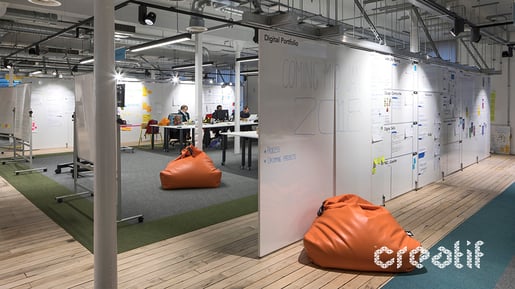|
The last twelve months have seen a dramatic change in the way we work and the workplaces we use. As businesses have been adapting to navigating the Coronavirus pandemic, they have been forced to adopt unconventional workplaces and remote working styles. Working from home has become the norm for most employees when a year ago, they were spending the majority of their time in the office.
With the vaccine rollout in full swing, and things looking positive for the future, companies are beginning to plan ahead. But with so much change in one year, the workplace as we know it will never be the same. Hybrid working is the new trend in the workplace world, but is it here to stay?
What is Hybrid Working?
Organisations all across the globe were forced to embrace remote working during the Coronavirus pandemic. Many businesses that were opposed to the idea have discovered that employees can actually work productively and efficiently from the comfort of their homes.
At the same time, many workers have enjoyed the lack of commute and a better work-life balance. While remote working has been a success for many during the global pandemic, it isn’t a realistic option for the future. There are many benefits for teams working together under one roof, and both businesses and employees need some real face time. This is where the concept of hybrid working comes in.

Hybrid working is a careful balance between working from home and office-based working. It gives employees the freedom to go back to the workplace part-time and work remotely for the rest. Hybrid working is all about being able to move between a home office and a traditional desk.
It offers many benefits to both the company and the workforce, and research reveals that a 77% of employees think hybrid working is the best way forward after the pandemic. With hybrid working set to be a trend that is here to stay, companies are having to analyse whether their current workplace is prepared for this new working style.
How Can Companies Adapt to Hybrid Working?
Hybrid working has some very different requirements when it comes to the workplace. An office is no longer a base for employees every single day, and it needs to adapt to suit a more flexible workforce. A survey completed by Unispace discovered that businesses are now seeking workplaces that inspire collaboration, improve employee retention and normalise flexible working. There is a shift from individual desk spaces and quiet focus areas to social co-working areas and spaces which reinforce the brand culture.
|
Most employees now have a practical and productive desk setup in their homes, so a replica of this in the office isn’t needed. The office is instead going to become a place for social interaction, inspiration and collaboration.
The future of the workplace is undoubtedly going to change with hybrid working becoming the new normal for many organisations. Peldon Rose have shared their top five workplace trends for 2021, and hybrid working is at the heart of every single one. They have discussed the need for more collaboration spaces within the office, with less need for 1-2-1 desk policies. The workplace must become a space that gives employees what they lack when working from home, which for most is communication, comradery and collaboration. Peldon Rose also predict a need for softer and workplaces, which create a homely vibe for employees that have become used to a more inviting space for business.
One of the most crucial adaptations to the workplace for hybrid working is the introduction of hybrid meeting spaces. Having meeting facilities set up with the technology to hold video conferences is more crucial than ever. Over the last year, video conference tools like Zoom and Teams have been more popular than ever before, and with the hybrid working model, these tools are essential enablers. Most workplaces do not have the acoustics to handle video conferencing in the way it will be used post-pandemic. The open-plan doesn’t create a nice Zoom/Teams experience as these programs are designed to be used by individuals. Third-space environments, acoustically effective meeting rooms and individual phone booths and pods are the sorts of workplace solutions that are set to quickly become commonplace in the post-pandemic office.

As Morgan Lovell have recently discussed, “the office is the physical heart and soul of a business representing its cultural aspirations. Without this palpable hallmark, you have at best a floating, fragmented collection of individuals loosely connected by a company name.” The case for creating a hybrid-supportive workspace is now seen as an essential, not just a fad or a theory that will one day pass. We need to be creating the ‘Office of the Future’ now. And whilst we are all hopeful that the Coronavirus pandemic will soon be behind us, there are lessons to be learnt from the past year. Our future workplaces need to be adaptable, flexible and give employees the freedom to work where they are most comfortable, productive and focused.
|

